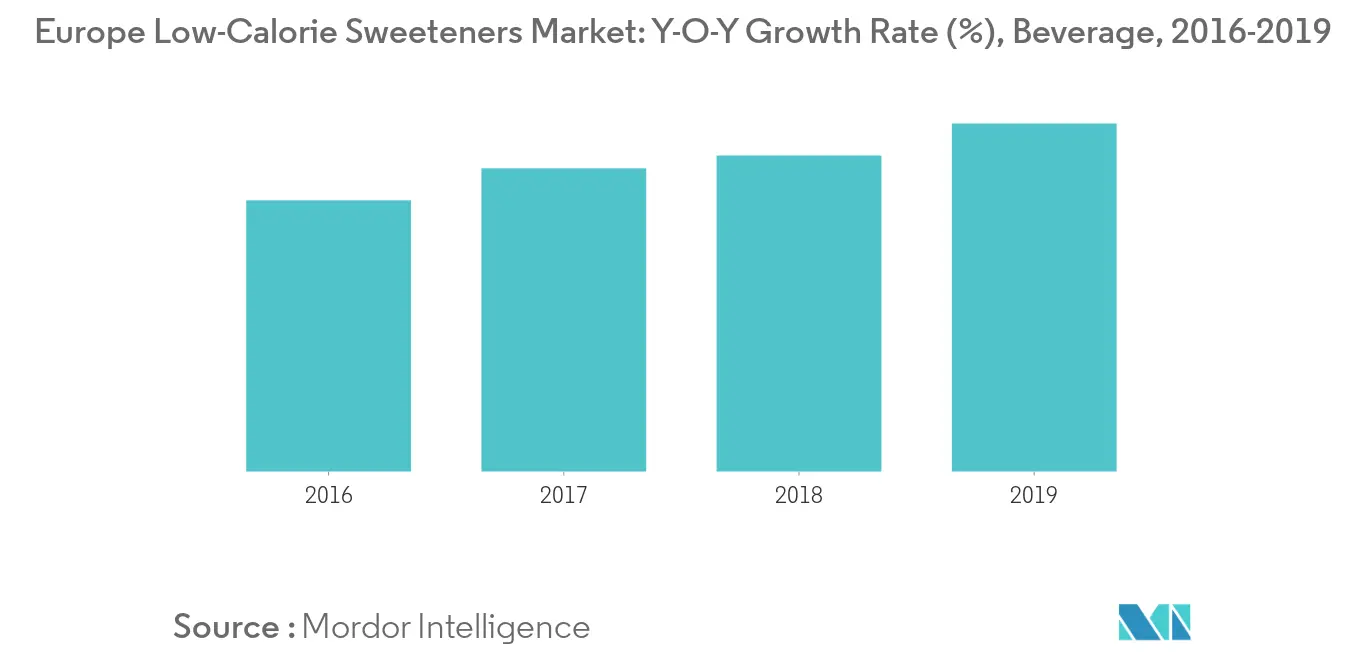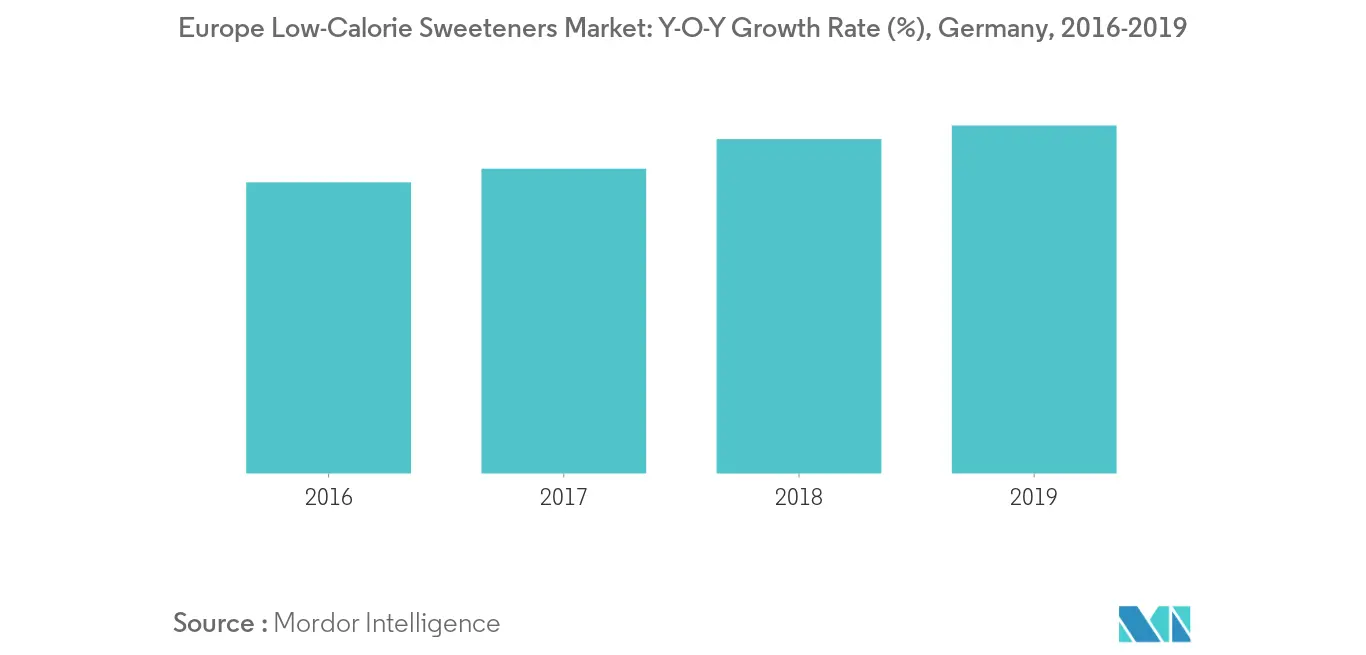Market Trends of Europe Low-Calorie Sweeteners Industry
This section covers the major market trends shaping the Europe Low Calorie Sweeteners Market according to our research experts:
The Application in Beverage Segment Drives the Market
Presently, there are eleven low-calorie sweeteners approved for use in soft drinks in Europe such as Acesulfame K, Aspartame, Stevia, Sucralose and others. These low-calorie sweeteners, after attaining government authorization, are widely used in the production of soft drinks. The European soft drink industry has long been involved in a continuous process of removing added sugar from its products and introducing low or zero calories varieties on the market, thus driving the application in the beverage sector. These low-calorie sweeteners are clearly indicated in the labeling of the products according to European food labeling legislation indicated as 'With sweetener(s)' next to the description of the product. Therefore, with the rising consumer knowledge regarding low-calorie sweeteners, the market is witnessing growth.

Germany is the Largest Market in the Region
In the European region, Germany is the largest market for low-calorie sweeteners. An increase in the consumption of processed food products coupled with a decline in the consumption of sugar due to the rising health consciousness in the country is boosting the market. The manufacturers operating in the country are undertaking huge amounts of R&D activities, which, in turn, are expanding the production of low-calorie sweeteners in the country. For instance: In June 2018, a Germany-based biotechnology company, c-Lecta, developed a new method (a process based on the enzymatic treatment of precursors of these sweeteners, which makes it possible to convert the precursors into a better-tasting sweetener, efficiently) in partnership with an ingredient supplier to help expand the production of a new plant-based sweetener, i.e., stevia. Moreover, the rising educational efforts by the German food and drink industry is projected to drive the usage in various industries. This is likely to present considerable future opportunities for the manufactures of low-calorie sweeteners in the market.


